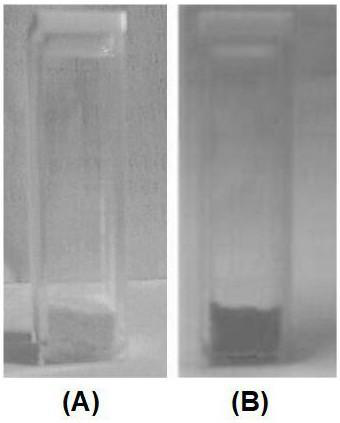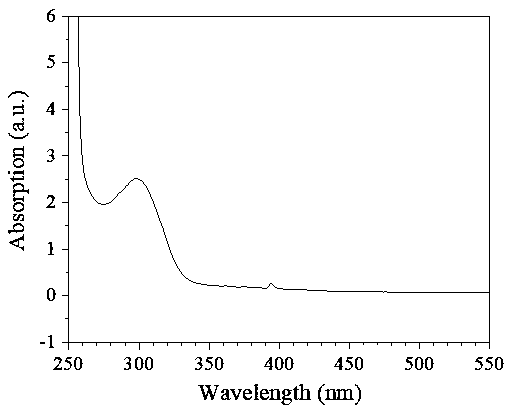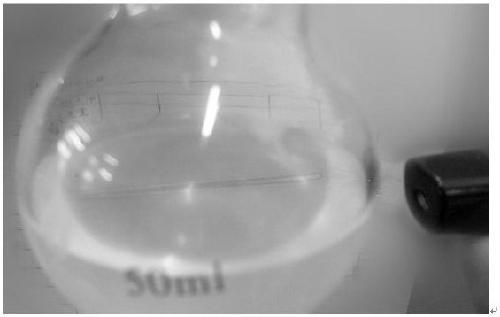Preparation method of CeCl3:Eu<3+> fluorescent probe array
A fluorescent probe and array technology, applied in the field of materials science, can solve the problems of poor photochemical stability, inferior to rare earth fluorescent probes, and quantum dot fluorescent probes whose emission wavelength is easily affected by the external environment, etc.
- Summary
- Abstract
- Description
- Claims
- Application Information
AI Technical Summary
Problems solved by technology
Method used
Image
Examples
preparation example Construction
[0064] a CeCl 3 :Eu 3+ The preparation method of fluorescent probe array is characterized in that: the CeCl 3 :Eu 3+ The emission band of the fluorescent probe is red fluorescence, and its surface contains a carboxyl hydrophilic group, CeCl 3 :Eu 3+The negatively charged carboxyl groups on the surface of the fluorescent probe and the positively charged paraquat molecules attract each other through the interaction between anions and cations. When they are close to each other in space, fluorescence resonance energy transfer occurs, resulting in the CeCl in the red spectral band. 3 :Eu 3+ The fluorescence intensity of the fluorescent probe is reduced to realize the selective recognition and detection of paraquat molecules, and the CeCl 3 :Eu 3+ The preparation process of fluorescent probe array includes the following four steps:
[0065] The first step is CeCl 3 :Eu 3+ Preparation of the activator solution of the fluorescent probe array: First, accurately weigh 1.6550 ~ ...
specific Embodiment
[0070] a CeCl 3 :Eu 3+ The preparation method of fluorescent probe array, at first, CeCl 3 :Eu 3+ Activator solution preparation for fluorescent probes, followed by CeCl 3 :Eu 3+ Preparation of fluorescent probe matrix solution, then, CeCl 3 :Eu 3+ Fluorescent probe preparation, and finally, CeCl 3 :Eu 3+ The preparation of fluorescent probe array is characterized in that the CeCl 3 :Eu 3+ The emission band of the fluorescent probe is red fluorescence, and its surface contains a carboxyl hydrophilic group, CeCl 3 :Eu 3+ The negatively charged carboxyl groups on the surface of the fluorescent probe and the positively charged paraquat molecules attract each other through the interaction between anions and cations. When they are close to each other in space, fluorescence resonance energy transfer occurs, resulting in the CeCl in the red spectral band. 3 :Eu 3+ The fluorescence intensity of the fluorescent probe is reduced to realize the selective recognition and detec...
PUM
 Login to View More
Login to View More Abstract
Description
Claims
Application Information
 Login to View More
Login to View More - R&D
- Intellectual Property
- Life Sciences
- Materials
- Tech Scout
- Unparalleled Data Quality
- Higher Quality Content
- 60% Fewer Hallucinations
Browse by: Latest US Patents, China's latest patents, Technical Efficacy Thesaurus, Application Domain, Technology Topic, Popular Technical Reports.
© 2025 PatSnap. All rights reserved.Legal|Privacy policy|Modern Slavery Act Transparency Statement|Sitemap|About US| Contact US: help@patsnap.com



